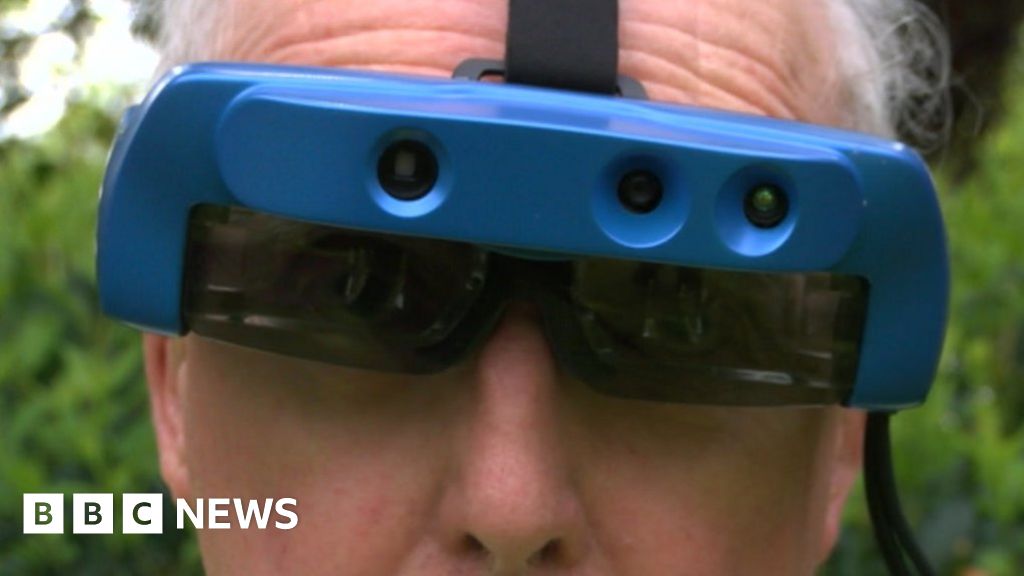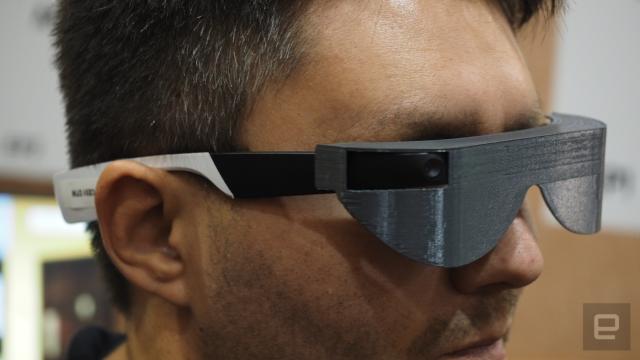Mobility Aids for Visually Impaired Users: Enhancing Independence and Navigation
Mobility Aids for Visually Impaired Users: Enhancing Independence and Navigation
Blog Article
Discover Advanced Assistive Gadgets for People With Aesthetic Impairments
The landscape of assistive technology for individuals with visual impairments is developing quickly, providing a series of innovative tools that boost autonomy and engagement (Braille displays and notetakers). From clever glasses that perfectly combine aesthetic input with auditory advice to innovative navigation applications that redefine spatial awareness, these tools are improving possibilities. Additionally, the current improvements in Braille technology and voice-activated systems significantly add to access. Nevertheless, the implications of these growths prolong much past mere functionality; they test standard assumptions of impairment and freedom. What might this indicate for the future of incorporation and assistance?
Smart Glasses Innovations
Smart glasses stand for a considerable development in assistive modern technology for people with aesthetic problems. These cutting-edge gadgets integrate various features designed to boost the individual's interaction with their setting. Furnished with sensors and electronic cameras, clever glasses can catch real-time visual details, which is after that processed and conveyed to the user through sound comments or haptic experiences. This performance allows people to obtain instant descriptions of their surroundings, enhancing their capability to browse and engage with the globe.
Moreover, improvements in expert system have additionally boosted the abilities of wise glasses. Artificial intelligence formulas can identify faces, read text, and recognize items, making them indispensable tools for day-to-day tasks. Individuals can get acoustic signs that offer context concerning their environment, promoting freedom and confidence.
Furthermore, the ergonomic layout and light-weight nature of many smart glasses make them suitable for extended usage, making certain convenience while enhancing functionality. As these gadgets proceed to evolve, they hold the potential to reinvent the way individuals with visual disabilities experience their lives, bridging the space in between accessibility and innovation. The ongoing research study and advancement in this field promise to broaden the opportunities for wise glasses, making them an essential element of modern-day assistive tools.
Navigating Apps and Equipment
Countless navigating apps and tools have become necessary resources for people with visual impairments, significantly boosting their capacity to go across strange environments. These technologies leverage GPS performance, audio cues, and real-time information to give customers with exact navigating support.
One prominent instance is the Aira application, which connects users to experienced representatives that can provide aesthetic descriptions of surroundings and navigation assistance via a live video clip feed. This service enhances the user's spatial recognition and confidence while browsing. One more remarkable device is Seeing Eye GPS, which supplies voice-guided navigating and points of passion, making it possible for individuals to gain access to crucial details regarding their environments.

As technology remains to advancement, the growth of much more innovative navigating tools assures to further equip individuals with visual problems, facilitating smooth movement and combination right into varied settings. Such developments are crucial in advertising a more comprehensive society.
Braille Technology Innovations
Over the last few years, innovations in Braille innovation have dramatically changed exactly how individuals with visual problems access info and involve with the globe around them. The advancement of portable Braille display screens has changed reading by permitting users to attach wirelessly to computers, tablets, and smart devices. These gadgets convert text into Braille in real-time, allowing smooth interaction with digital material.
Furthermore, cutting-edge Braille printers have arised, enhancing the production of responsive materials. Modern embossers are faster and a lot more efficient, permitting the quick development of Braille records and instructional products. This efficiency reduces the moment and cost connected with generating Braille resources, making them extra available to companies and schools.
Furthermore, the assimilation of Braille with other modern technologies, such as expert system and machine discovering, has actually opened up brand-new methods for individualized learning experiences. Voice acknowledgment and synthesis technologies can match Braille, supplying an inclusive technique to information dissemination.
As the need for comprehensive education and workplace atmospheres expands, these technical advancements play a vital function in encouraging individuals with aesthetic impairments, guaranteeing they have equal accessibility to details and possibilities in different aspects of life.
Wearable Tools for Self-reliance
A growing array of wearable gadgets is enhancing self-reliance for people with visual problems, using cutting-edge options that improve navigation and everyday living. Braille displays and notetakers. These devices utilize innovative modern technologies to provide real-time responses and assistance, advertising freedom in numerous environments

Wearable technology additionally includes smartwatches that can be configured with access functions, making it possible for customers to obtain notices, track their areas, and even require assistance with the touch of a button. Some gadgets incorporate synthetic intelligence to assess the environment, offering audio descriptions of close-by items or individuals.
Voice-Activated Assistive Solutions
Leveraging voice-activated assistive services has actually transformed the landscape of support for individuals with aesthetic impairments, offering hands-free interaction and access to a range of jobs. These modern technologies make use of all-natural language processing and expert Website system to enable users to carry out daily tasks via simple voice commands.

In addition, current developments in voice recognition precision have boosted the customer experience considerably, suiting varied accents and speech patterns. This inclusivity makes sure that more people can gain from these technologies, cultivating a higher sense of autonomy.
Verdict
In final thought, the development of sophisticated assistive tools considerably improves the independence and quality of life for people with visual impairments. Advancements such as smart glasses, navigating applications, Braille technology, wearable tools, and voice-activated options this article collectively promote a more comprehensive atmosphere. These technologies equip customers to browse their environments with confidence and engage even more fully with the globe, ultimately promoting higher ease of access and equal opportunities for people facing visual obstacles.
The landscape of assistive innovation for individuals with aesthetic problems is progressing rapidly, offering an array of innovative devices that enhance autonomy and involvement.Smart glasses represent a substantial innovation in assistive technology for people with aesthetic disabilities. As these tools continue to advance, they hold the prospective to change the way people with aesthetic problems experience their day-to-day lives, linking the space in between access and technology.In recent years, advancements in Braille technology have substantially changed just how people with aesthetic disabilities gain access to details and involve with the globe around them. These modern technologies encourage users to navigate their surroundings with self-confidence and involve even more completely with the world, inevitably advertising better accessibility and equal opportunities for individuals facing visit their website visual obstacles.
Report this page